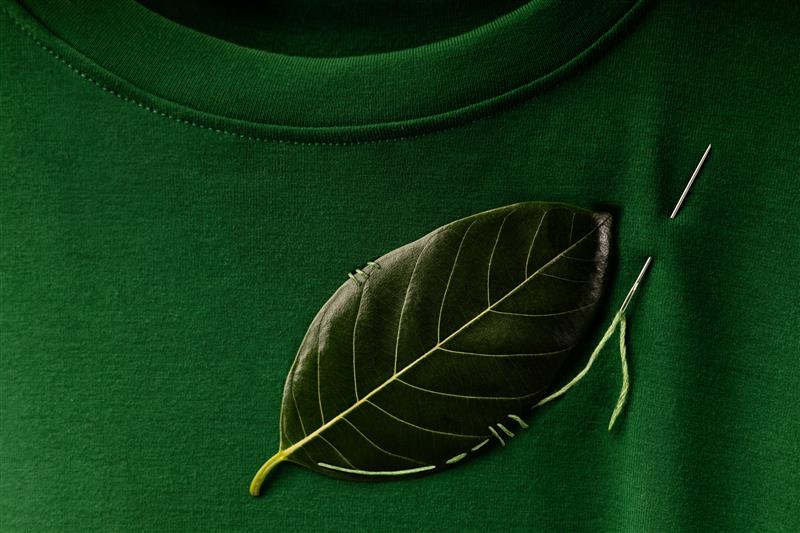What will the agriculture of the future look like?

Will robots replace farmers? Will we use less fertilizers? Will it be possible to feed the world’s growing population? These are questions worth asking ourselves as we observe the rapidly changing agriculture.
Thanks to agriculture, we transitioned to a sedentary lifestyle and were able to develop civilization as we know it. For centuries, most of the world’s population did just that. Poland, too, was an agricultural country for a long time. After World War I, more than 70 percent of Poles lived from farming. As late as the mid-1990s, 22 percent of workers were employed in agriculture. Today it is less than 10 percent.
How is it that despite such declines in employment, we still produce a lot of food? After all, Poland is one of the largest exporters of it in the world – in 2018 it was in 13th place (and 7th in the European Union).
A revolution is taking place in agriculture before our eyes. And this is by no means the first such change.
Four revolutions
It is assumed that people began farming around 10,000 BC. Revolutions came much later, at the turn of the 20th century. However, this does not mean that for 12,000 years agriculture did not change at all – but never on such a scale and with such consequences.
The first (agriculture 1.0) began at the end of the 19th century and involved the introduction of machines powered first by steam engines, and in subsequent years by internal combustion and electric motors. These relieved the burden of human and animal labor and made it faster and more mechanized.
The second was called green, and it began in the 1950s. It was associated with the advent of relatively cheap fertilizers and pesticides, new crop varieties, and specialized machinery. Agriculture 2.0 was thus greater productivity and efficiency, but also the beginning of the problems we associate with industrial agriculture today – environmental poisoning, loss of biodiversity.
The third revolution involved a search for moderation. How to dose fertilizers to help, but also not to harm? The slogan of agriculture 3.0 is precision. Improving crop species to make them more resistant to pests and diseases. Modifying machinery to carry out agronomic treatments more accurately. And finally, the use of GPS signals, which made it possible to create yield maps, for example.
Technological development, however, has accelerated, so now we are witnessing the fourth revolution.
Digital agriculture
The fourth revolution is being driven by state-of-the-art machinery, artificial intelligence and, above all, data. The work of the modern farmer is now more about planning and managing resources, rather than operating machinery and working the land. A computer or tablet with the right software is as important as a tractor.
Several factors beyond technology have contributed to this revolution. First, climate change. The agricultural industry is responsible for 9 percent of greenhouse gas emissions worldwide. These come mainly from fertilized soil, from which nitrous oxide, among other things, escapes, but also from intestinal fermentation of cattle (methane) and animal waste management, i.e. improper storage of manure.
Second, the loss of biodiversity, which is the result of, among other things, large, intensively fertilized monoculture crops.
Third, the exodus of people from the countryside to the cities, social changes and the subsequent decline in the number of people employed in agriculture.
Agriculture 4.0 is an attempt to respond to these challenges. It gives the farmer – or now rather the agribusinessman – the tools to grow crops with as little fertilizer and pesticides as possible, to use his resources wisely, to be prepared for changing conditions (such as weather).
It also gives him, above all, data. Starting with weather data – accurate forecasts, but also historical data – through precise information about the soil he cultivates (e.g., what fertilizer needs it has) to yield maps created by his machines (equipped with special sensors) with the support of the GPS system. Thanks to them, the farmer knows exactly in which part of the field, for example, wheat gives a higher yield, and where it needs to be supported with fertilizers. Such maps, especially if they are created over several years and seasons can be compared, allow very precise planning of sowing, fertilization or soil sample testing. This makes it possible to use minimal doses of fertilizers and crop protection products – benefiting the environment and the farmer’s finances.
Precision machinery
Of course, a farmer should not do it by hand, “at a guess.” He needs the right equipment that works with inhuman precision. For example, using point seeding, which “allows you to apply the seed exactly where you want it – Marek Szychta, chief specialist in agricultural and forest machines design from Łukasiewicz – PIT, said in the “About Technology Out Loud ” podcast (in Polish). – This makes it possible to plan seeding in such a way that the distance from seed to seed is in the right proportion, not only in terms of the row of seeded crops, but also – row to row.”
We are increasingly seeing robots in the fields. We divide them into two types.
– There are robots, which are created by arming a standard agricultural tractor with equipment – precise GPS, control, drive that allows this vehicle to move automatically in the field, explains Marek Szychta. – This tractor is aggregated with a precision tool, constitutes a kind of robot that is able to move on its own in the field, and the operator sitting in the cabin only controls it or plans the route. The other part is self-driving robots, which do not have a cab, so they do not have an operator. A person communicates with this robot remotely – plans its route, and the robot is automatically or autonomously able to move around the field.
As an example of the first type of equipment, there is an automatic weeder, which was developed by researchers from Lukasiewicz – PIT in cooperation with Expom. It can be used in all green row crops, such as rapeseed, corn or sugar beets.
It is equipped with a camera that is placed in the center of the selected weeding section. The image recorded by it goes to the machine’s computer, where a special algorithm detects the rows of plants and transmits the information to the controller. This in turn controls the position of the machine.
In turn, a display is placed in the tractor cab, so the farmer driving the tractor can control the weeding process in real time. The panel is equipped with the most important and necessary functions – the rest is done automatically.
Robot in the field
To the second group we can include the Polish Robot. It was created by a consortium that included two institutes of the Łukasiewicz Research Network – the Poznan Institute of Technology and the Aviation Institute, and the Unia company.
The robot is a comprehensive tool for growing corn. It sows, weeds, conducts spraying and dispenses crop protection products and fertilizers. It uses the latest technological solutions, including those based on artificial intelligence and a network of sensors that help it collect data from the environment (including soil abundance and moisture, plant condition, their fertilizer needs, ambient temperature and humidity).
It does everything automatically (although it has remote control capabilities), it only needs to be uploaded with a work plan and a field map. It can recognize what is corn and what is weeds (thanks to cameras and learned artificial intelligence algorithms). The weeds, by the way, he efficiently removes, from the rows of corn as well as from the spaces between them. It can also assess the degree of weed infestation on its own. As it works, it creates a map of the soil’s fertilizer needs and mineral abundance, so it can adjust the fertilizer dose for a given plant.
The robot also recognizes obstacles. When, for example, an animal or human appears in the field, it gives a light and sound signal. When that doesn’t work – it stops and sends information to its operator.
What’s next?
Is this the biggest revolution? It’s hard to say. From our perspective – yes, because we know no other agriculture than mechanized. A hundred years ago, the biggest revolution was the appearance of machines in the field, which relieved the burden on animals and people. Back then, no one dreamed of genetically modified species or maps of fertilizer needs. Just as we can’t imagine what might come in a hundred years.
For now, however, there are a lot of questions. Will robots replace farmers? Will we still see working humans in the fields in 10 or 20 years? Will agricultural knowledge – that learned from schools, books, and experience with farming – disappear? Will the new generations want to acquire it, if machines know and can do everything? And if the machines break down, refuse to obey – will we still know how to plow, sow, cultivate? What about the data the machines collect and analyze?
– Currently, no one controls who actually has access to this data, and whether this data is not being collected and processed by states somewhere in order to estimate the amount of a country’s crops and their prices on this basis, and thus speculate on the price more effectively, warns Marek Szychta. And he adds another point: – To what extent are we able to delegate decision-making to algorithms that are learned from the data collected? How safe will this be, and who will be held responsible for these decisions?
See the offer of Łukasiewicz – PIT on research and development of agricultural machinery technology.




